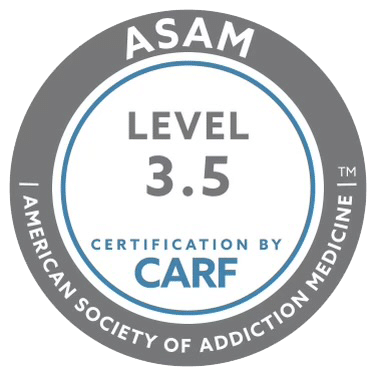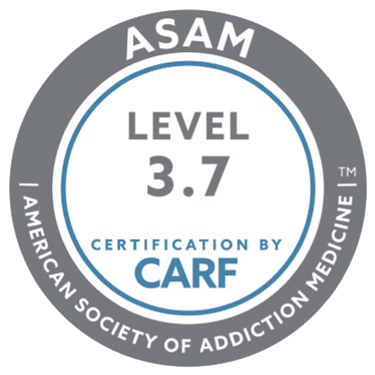Ativan, often known by its generic name lorazepam, belongs to a class of medications called benzodiazepines. As a prescription drug and a Schedule IV controlled substance, doctors prescribe Ativan to treat anxiety disorders, insomnia, and some types of seizures. Ativan works by enhancing the effects of a natural brain chemical called GABA, which helps calm excessive brain activity.
If you’re trying to quit, understanding how long Ativan remains active in your body is crucial for safe and effective treatment. This is particularly true because taking Ativan too frequently can lead to higher levels building up in your system. While Ativan can provide significant relief for many patients, it carries serious risks of physical dependence and withdrawal symptoms if used for extended periods. Consequently, quitting Ativan requires a well-planned process to improve your odds of success.
How Long Does Ativan Take to Wear Off?
The effects of a single dose of Ativan typically last about eight hours, but some people may feel its impact for the better parts of a day. Ativan’s half-life is roughly 12 to 18 hours in most adults. Consequently, it can take two to four days for Ativan to completely clear from your body.
Why is the half-life so important? A drug’s half-life measures the time it takes for half of the medication to be eliminated from your bloodstream, which helps doctors determine safe dosing schedules. For comparison among other anti-anxiety medications, Xanax has a shorter half-life of about eleven hours. Valium can last up to 48 hours in the body. Ativan is popular in part because it’s a middle-ground option that provides sustained relief without extremely long-lasting side effects per dose.
Several factors affect how quickly your body processes Ativan including:
- Age
- Kidney function
- Metabolic rate
- Liver function
- Weight
The dosage amount and frequency of use also play important roles in elimination time. Be aware that other medications can interact with Ativan and alter how long it stays in your system. Older adults tend to process Ativan more slowly, which means the drug might remain active in their bodies for longer periods.
Your liver plays the primary role in breaking down Ativan through a process called conjugation. In this process, the drug combines with other substances to form inactive compounds that your body can eliminate. This process differs from many other benzodiazepines that rely on oxidation for breakdown. Consequently, doctors consider Ativan safer for people with mild to moderate liver disease. However, severe liver problems can significantly extend the time Ativan remains in your system. Be sure to tell any treatment provider about any liver conditions before you begin the process of quitting Ativan.
Kidney function matters because urination is how your body excretes waste. Likewise, your metabolic rate influences how quickly your body moves lorazepam and the excreted materials through your system. Weight is a factor because your total body mass affects how quickly Ativan will exit your system.
| Drug Test Type | Detection Window |
| Blood Test | Up to 3 days |
| Saliva Test | Up to 8 hours |
| Hair Test | Up to 30 days or more |
| Urine Test | 6 to 9 days |
Side Effects during Ativan Use
Ativan often causes side effects that can appear even after short-term use. Common reactions include drowsiness, dizziness and confusion, which can interfere with daily tasks. Many individuals who use Ativan also experience issues with physical coordination. These effects may become more noticeable when the medication is taken in higher doses or combined with alcohol.
Long-term use of Ativan can lead to more serious concerns. Ativan is known to cause physical dependence, making it difficult to stop without experiencing withdrawal symptoms. Irritability and insomnia are among the two most common signs of withdrawal. Cognitive issues like memory problems or difficulty concentrating may also appear over time. The body can also build a tolerance to Ativan, reducing the drug’s effectiveness and increasing the risk of a substance use disorder.
Mental health concerns are another factor to consider. Benzos like Ativan can sometimes worsen anxiety or depression in certain individuals, despite their use for managing such conditions. Medical supervision is necessary for prescribed use and essential for anyone attempting to quit Ativan.
Withdrawal Symptoms Once You Quit Ativan
When Ativan use stops or its effects wear off, withdrawal symptoms can appear. This is especially common in folks who’ve used it regularly. Anxiety and panic attacks are among the most common signs of withdrawal, often occurring as the body struggles to adjust without the medication’s calming effects. These episodes can feel intense and may come on suddenly.
For many people, insomnia and restlessness are also more frequent during withdrawal. Individuals may find it hard to fall or stay asleep, leading to feelings of fatigue and irritability. Restlessness can make it difficult to relax, adding to the discomfort. Generally, Ativan withdrawal symptoms will fade after two to four weeks.
Physical symptoms often accompany the mental and emotional challenges. The potential physical withdrawal symptoms of stopping Ativan use may include:
- Tremors
- Sweating
- A raised heart rate
Withdrawal symptoms appear because Ativan affects the brain’s neurotransmitters. Ativan particularly targets gamma-aminobutyric acid (GABA), which helps regulate anxiety and relaxation. Over time, the brain becomes reliant on the drug to maintain balance. When someone stops Ativan use, their brain needs time to restore its natural function. The initial imbalance during this recovery period can result in heightened anxiety, restlessness and other symptoms. The severity often depends on factors like how long a patient used Ativan and whether they stopped using it abruptly or tapered gradually.
Factors Affecting Ativan Elimination
Several factors influence how quickly Ativan leaves the body. Individual traits such as age, metabolism, and overall health play significant roles. Older individuals or those with slower metabolic rates may process the drug more slowly, leading to prolonged effects. The frequency and duration of use also impact elimination. Regular, long-term use can cause Ativan to accumulate in the body, extending the time it takes to clear the system.
Drug interactions further affect Ativan metabolism. Certain medications can either speed up or slow down how the liver processes Ativan, altering its elimination rate. Some drugs that commonly affect Ativan elimination include:
- Ketoconazole, an anti-fungal medication
- Fluoxetine, an SSRI to treat depression and anxiety
- Omeprazole, a proton pump inhibitor to treat acid reflux
- Rifampin, a strong anti-bacterial
- Carbamazepine, an anti-convulsive
Many sleep medications also interact with Ativan, including melatonin supplements. Medical supervision is necessary to assess possible medication-related issues during the process of quitting Ativan.
How Soon Can You Safely Taper Off Ativan?
Tapering off Ativan is crucial to avoid severe withdrawal symptoms and ensure safety. A gradual reduction allows the body to adjust without the sudden shock of stopping. Healthcare professionals create personalized tapering plans based on factors like dosage, duration of use and individual health needs. Common schedules involve reducing the dose by 10 to 25 percent every one to two weeks. Adjustments to the tapering schedule may be necessary. Close medical supervision throughout the process is essential for a safe and effective detox of Ativan.
Tapering Schedule for Getting Off Ativan (Lorazepam)
Tapering off Ativan (brand name of Lorazepam) should always be done under the supervision of a healthcare professional to minimize withdrawal symptoms and prevent serious health risks. A gradual taper is recommended to reduce dependence safely. Below is a generalized tapering schedule based on typical prescribing guidelines.
General Tapering Guidelines
- Reduce dosage by 10-25% every 1-2 weeks (depending on tolerance and doctor’s advice).
- If withdrawal symptoms are severe, slow the taper rate or stabilize before reducing further.
- In some cases, switching to long-acting benzodiazepines (e.g., diazepam) may be recommended to ease withdrawal.
Ativan (Lorazepam) Tapering Schedule
This schedule assumes a starting dose of 2 mg per day (adjust according to personal dosage).
| Week | Daily Dose (mg) | Reduction (%) | Notes |
| 1 | 1.5 | 25 | Monitor for withdrawal symptoms. |
| 2 | 1.5 | 0 | Maintain dose to stabilize. |
| 3 | 1 | 33 | Reduce dose if stable. |
| 4 | 1 | 0 | Maintain dose to adjust. |
| 5 | 0.75 | 25 | Small reductions help avoid severe withdrawal. |
| 6 | 0.5 | 33 | Continue monitoring symptoms. |
| 7 | 0.25 | 50 | Nearing end of taper. |
| 8 | 0 | 100 | Complete discontinuation. |
Note:
- If withdrawal symptoms are severe, slow the taper and extend stabilization periods.
- Some individuals may need longer than 8 weeks depending on dependency level and duration of use.
- Always consult with a doctor before making any medication changes.
The Role of Professional Addiction Treatment
Professional addiction treatment plays a vital role in overcoming Ativan dependence. Recreate Behavioral Health Network offers medical detox services to manage withdrawal symptoms safely and effectively.
We personalize every treatment plan to address the individual’s unique needs, considering factors like the severity of dependence and co-occurring mental health conditions. Beyond detox, Behavioral Health Network offers long-term recovery options, including therapy to address underlying issues and mental health support to promote emotional stability. Our goal is to help patients build the foundation for lasting recovery.
When to Seek Help for Ativan Dependence
You should seek help for Ativan dependence if you experience worsening anxiety, memory problems or difficulty functioning without the medication. Other signs include increased use or an inability to stop taking it despite attempts. Stopping Ativan abruptly without medical supervision can be dangerous, leading to severe withdrawal symptoms like:
- Seizures
- Increased anxiety
- Physical and emotional distress
Professional help ensures a safe and controlled environment for reducing dependence and managing withdrawal. Recreate Behavioral Health Network offers outpatient care, and we also have programs for detox, intensive outpatient care, partial hospitalization and residential (inpatient) addiction treatment.
Conclusion
If you or someone you know is struggling with Ativan dependence or Ativan addiction, seeking professional help is crucial. Ativan, like other benzodiazepines, affects the central nervous system and can lead to substance abuse and dependence. Recreate Behavioral Health Network offers safe and effective treatment options, including medical detox and personalized care, addressing both the physical and psychological aspects of dependence. Our team provides the support needed to improve your odds of a successful recovery. Contact Recreate Behavioral Health Network today to begin the recovery process.










